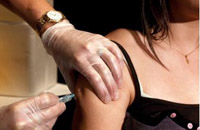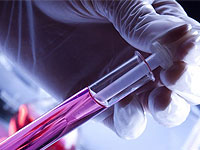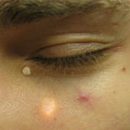Cervical cancer can be warned, - Scientists say. In Switzerland, this statement has already been adopted and instilled in women from this ailment, or rather, from the human papilloma virus provoking his occurrence. Read more about this in the article.
Content
Cervical cancer ranks second among oncological diseases in women. According to the statistics of the World Health Organization for 2006, mortality from cervical cancer amounted to 270,000 cases, which is 8% more than in 2005. Every year more than 500,000 new cases are detected, 90% of which are in developing countries. In developed countries, the incidence frequency is reduced due to effective diagnostic and prevention programs.
At present, Switzerland about 1,500 women suffers from this disease, and more than 250 new cervical cancer cases and about 100 deaths are registered in the country. Half - in women up to 50 years, and a quarter - up to 40. In relation to world statistics, these data are at the average level, and the forecast seems to be quite favorable, 70% of the ill people live for another five years. In Russia, for example, from the cervical cancer, 35 women die every day.
Cervical cancer begins with an asymptomatic precancerous disease, or so-called dysplasia, which can develop for many years before moving directly to cancer. At the early stage of the Preiodine, the treatment with a laser or surgical removal of the neck is shown. If cancer is diagnosed, the patient's life is raised on the map, followed by severe surgical intervention, chemical and radiation therapy. Do not talk about the severe tolerance of such treatment and the long period of recovery.
The usual annual smear in the gynecologist (RAR-TEST) is the most common and earliest diagnosis of precancerous diseases. Experts say that if the 3rd annual smears were negative, then subsequent diagnostics can be held once every three years. If the smear (rar-test) is suspicious, colposcopy (study of the cervix through an optical increase), a biopsy is taken (a small piece of tin fabric), and then the PCR analysis is made - a method that is able to determine in our body of a virus that promotes the virus Development of cervical cancer.
This is a human papilloma virus (HPV or HPV), which has also been known to the doctors of ancient Ellala and is described in detail by Hippocratic. Currently it is established that the main reason for the occurrence of cervical cancer is precisely in this virus.
The human papilloma virus is transmitted by sexual pathway as a result of contact with the male carrier or in childbirth. His incubation period lasts from 1 to 5 months. He can disappear, then appear again. And in total there is about a hundred species of human papilloma virus, but still known only two major malignant viruses that can cause 70% cervical cancer - it is oncogenic HPV16 and HPV18. It is the oncogenic viruses that are in 100% cases of invasive cancer.
Whether the virus will be dangerous or not, it is impossible to determine in advance, it is known that only 3-5% of women will have a tumor. The rest can develop benign wages, or «Ano-genital warts», Regressing in 15-17% of cases. Responsibility for them In 90% of cases, 2 main noncoopile types of the virus are carried - HPV6 and HPV11. But it is necessary to keep in mind that the virus can flow and asymptomatic.
 If we are talking about a poison (or virus), it is logical that the antidote should exist (t.E. vaccine). And such a unique vaccine already exists, and it is she who is a means of preventing the virus of papillomas, and hence the cervical cancer.
If we are talking about a poison (or virus), it is logical that the antidote should exist (t.E. vaccine). And such a unique vaccine already exists, and it is she who is a means of preventing the virus of papillomas, and hence the cervical cancer.
Studies have shown that the effectiveness of the vaccine may be one hundred percent only in women who did not have contact with HPV16 / 18, that is, never had sex contacts. This is possible only in girls in the period before puberty, which, in turn, depends on the cultural characteristics of the country of residence and social status. That is why parents should think about the vaccination process sooner. The effectiveness of the vaccine is reduced by 39% of the girls who had a person's papilloma virus infection earlier, and it is completely ineffective if the presets already exist. In Switzerland, the testimony for vaccination against the human papilloma virus is the age of girls from 11-14 years. Girls from 15 to 19 years can still be vaccinated until 2012. After 19 years, the approach will be individual in each specific case, up to 26 years.
The Geneva Cantonal Program of Vaccination against the Papilloma Human virus was created with the assistance of the General Directorate of Health and the Department of Economics and allows you to carry out free vaccination of girls from 11 to 19 years. This can be done by the attending physician, a gynecologist or pediatrician participating in the program, in the Geneva Cantonal Hospital or at school. The first successful vaccination in the canton of Geneva was held in 2007 and touched 1200 girls. Starting from 2012, vaccination will remain free only until 15 years. If the girl turned 20 years old, then she has time to make a vaccine free - until June 2009.
The Swiss market uses a vaccine that protects against the main four species - HPV16,18,6 and 11 - and includes three doses from 6 months to a year. Protection of this vaccine is present in the body within 5 years after vaccination. Its duration is not yet accurately installed, and perhaps in the future will be needed re-vaccination. There is evidence that the vaccine can act 10 years and even all life. Vaccine attack is aimed exclusively on tumor tissue. It is well tolerated, has few side effects, which has been proven by numerous clinical studies and pharmacological controls conducted in Europe and the United States and based on the study of multi-million dollar vaccination. Vaccine introduced intramuscularly into the shoulder or femoral area. The contraindication is known allergies to the components of the vaccine, and also if the patient is in the process of acute infectious disease.
Studies concerning the boys vaccination are at the stage of development, so the effectiveness of the vaccine tolerance of the virus is not yet proven. The male-carrier of the virus may have genital / anal conglishers, which only in rare cases will lead to an anus cancer, rectum or penis.
It must be remembered that the vaccine protects only 70% and only from the above HPV species, and the rest of these viruses continues to exist and modify. Vaccine does not protect against the development of cervical cancer, but reduces the risk of its occurrence. It is aimed exclusively on the prevention of cervical cancer, and not on its cure. Therefore, the diagnosis (smear and / or PCR analysis) should not be stopped, and the visit to the gynecologist should remain regular.
Are there other ways to prevent human papilloma virus? Undoubtedly. These include systematic use of a condom, although it cannot be fully effective, t.To. Virus particles may be present on the skin and mucous genital area; Revising the age of first sexual contact and limiting the number of sexual partners, as well as avoiding all states weakening our organism: stress, avitaminosis, immunodeficit and violations of the normal vaginal flora. Indeed, for the development of the virus and the appearance of symptoms, the body is needed in the body leading to active cell division, and in turn to the large accumulation of the virus, and this is possible only with the decrease in immunity. Therefore, treat your health care and health carefully to your health and health.









